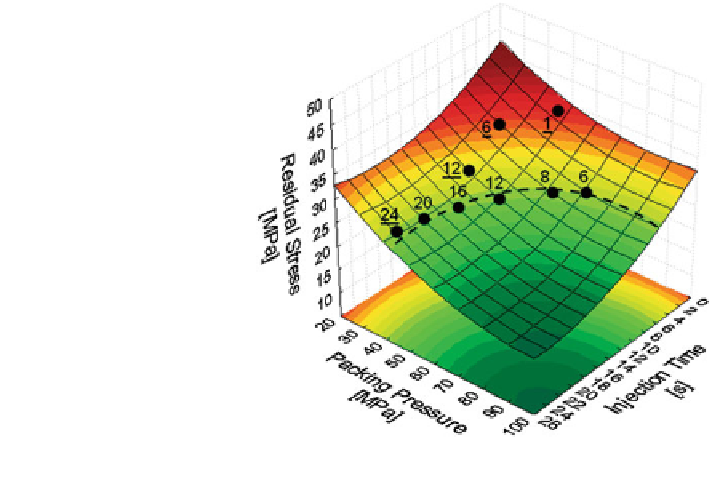Information Technology Reference
In-Depth Information
Fig. 8.12 Response surface
obtained using cenítral
composite design, results
obtained through chemical
probe. Tables
8.11
and
8.13
parts which would not be attacked by the acid through low injection times and high
packing
pressure.
Besides,
no
condition
below
this
isoline
should
present
bleaching when attacked with acetic acid.
8.3.2.4 Second Trial
Table
8.12
was designed as follows: Eq.
8.2
was solved taking into account
constant residual stress and equal to 26.05 MPa, a condition required to meet the
hypothesis described above.
The same injection times, molding and injection temperatures from Table
8.13
were used. Packing pressure (equation) was thus obtained. Upon entry of the same
data into the flow rate simulation tool, simulated packing pressure and post-
processed residual stresses are determined.
The highest error between simulated results and those obtained by Eq. (
8.2
)for
packing pressure was 3.6 %, which corresponds to point 20. Five samples analyzed,
corresponding to points 6, 8, 12, 16, and 20 showed no bleaching after treatment
with acid. Electron microscopy analysis with 200 magnification showed no presence
of micro cavities in the order of magnitude observed in the first trial (see Fig.
8.14
).
Process settings of trials of response time in Fig.
8.12
are transferred via analogy.
Taking into account the absence of surface bleaching of this trial, one can state that,
in these conditions, all parts would be adequate for the chrome plating process.
Consequently, the hypothesis of following the isoline would be demonstrated, i.e., it

Search WWH ::

Custom Search